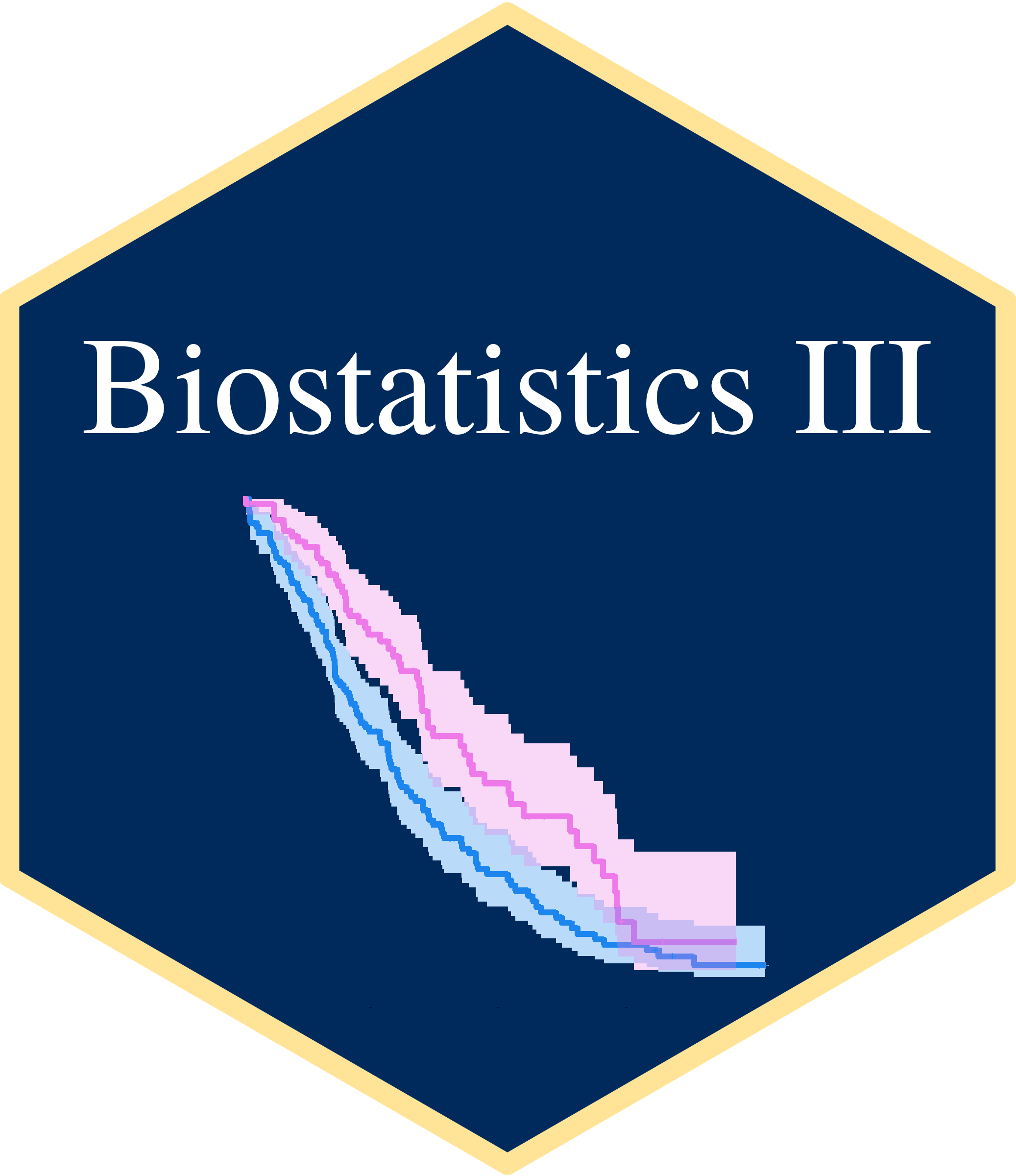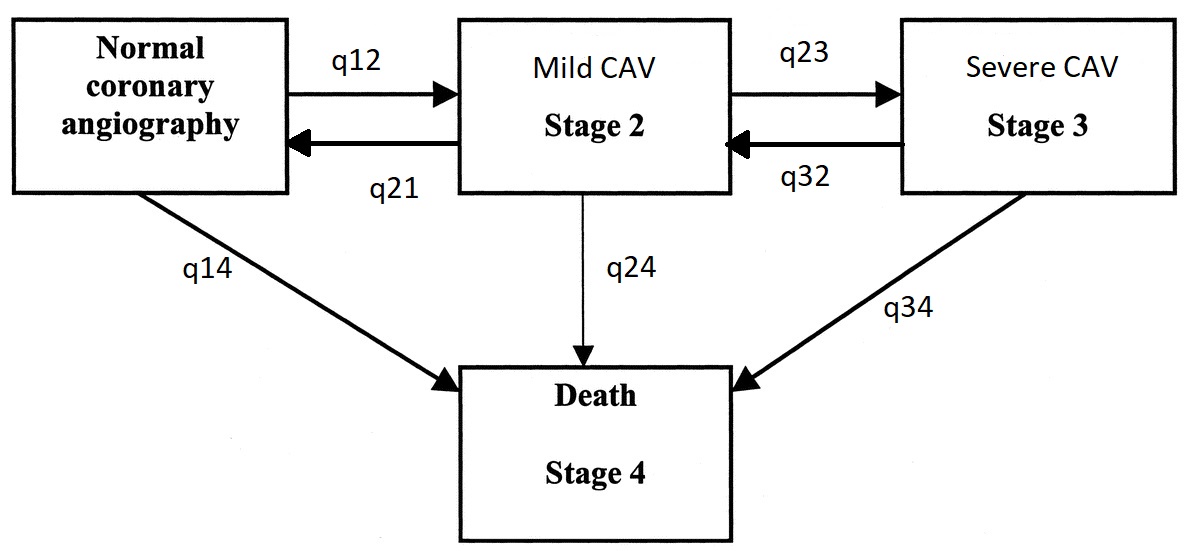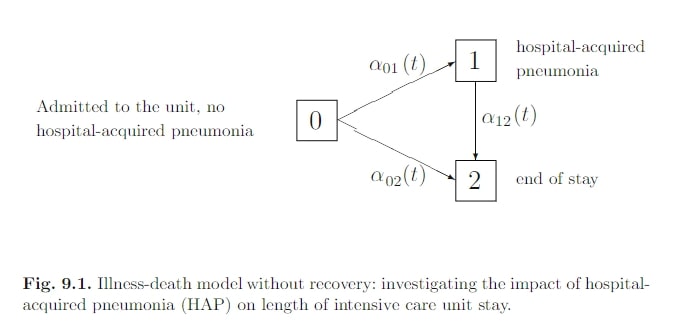$Observed
Time Interval Cov 1-1 1-2 1-3 1-4 2-1 2-2 2-3 2-4 3-1
1 [0,3.04) 1 [-2.67,-1.23) 71 3 5 5.61 1 9 2 0.63 0
2 [3.04,5.97) 1 [-2.67,-1.23) 53 5 1 0.00 1 4 5 0.32 0
3 [5.97,19.46] 1 [-2.67,-1.23) 48 4 2 0.84 4 7 3 0.63 0
4 [0,3.04) 2 [-2.67,-1.23) 66 12 0 6.86 0 0 0 0.75 0
5 [3.04,5.97) 2 [-2.67,-1.23) 67 3 0 0.59 3 2 3 0.34 1
6 [5.97,19.46] 2 [-2.67,-1.23) 53 8 1 0.98 3 5 1 0.56 0
7 [0,3.04) 3 [-2.67,-1.23) 72 6 1 7.53 0 0 0 0.62 0
8 [3.04,5.97) 3 [-2.67,-1.23) 45 7 0 6.41 1 3 0 0.34 0
9 [5.97,19.46] 3 [-2.67,-1.23) 40 9 2 13.18 0 5 1 7.81 1
10 [0,3.04) 1 [-1.23,-1.18) 55 8 3 7.22 3 2 1 0.34 0
11 [3.04,5.97) 1 [-1.23,-1.18) 46 5 0 1.00 4 8 3 0.00 0
12 [5.97,19.46] 1 [-1.23,-1.18) 22 9 0 0.94 3 8 3 1.05 0
13 [0,3.04) 2 [-1.23,-1.18) 64 4 5 9.88 0 0 0 0.34 0
14 [3.04,5.97) 2 [-1.23,-1.18) 45 5 2 2.93 2 5 1 0.39 1
15 [5.97,19.46] 2 [-1.23,-1.18) 27 9 2 1.43 5 7 5 1.22 0
16 [0,3.04) 3 [-1.23,-1.18) 57 7 2 8.90 0 0 0 0.32 0
17 [3.04,5.97) 3 [-1.23,-1.18) 71 13 3 8.07 1 1 0 0.61 0
18 [5.97,19.46] 3 [-1.23,-1.18) 44 12 2 17.63 4 9 4 8.73 0
19 [0,3.04) 1 [-1.18,-1.18] 34 4 4 6.26 2 5 3 0.29 0
20 [3.04,5.97) 1 [-1.18,-1.18] 41 5 0 2.33 2 11 6 0.96 0
21 [5.97,19.46] 1 [-1.18,-1.18] 36 10 0 0.27 0 13 3 0.66 0
22 [0,3.04) 2 [-1.18,-1.18] 58 9 0 7.17 0 0 0 0.33 0
23 [3.04,5.97) 2 [-1.18,-1.18] 50 8 0 3.21 2 6 2 2.14 0
24 [5.97,19.46] 2 [-1.18,-1.18] 38 5 0 0.36 4 9 4 1.41 0
25 [0,3.04) 3 [-1.18,-1.18] 68 11 4 6.57 0 0 0 0.38 0
26 [3.04,5.97) 3 [-1.18,-1.18] 63 10 4 7.46 0 4 0 4.90 0
27 [5.97,19.46] 3 [-1.18,-1.18] 33 13 1 14.37 1 11 4 11.93 1
3-2 3-3 3-4
1 1 0 0.29
2 0 7 1.34
3 0 1 1.33
4 0 0 0.31
5 1 3 1.50
6 0 4 2.02
7 0 0 0.40
8 0 0 2.16
9 1 2 8.65
10 1 6 0.00
11 0 11 0.75
12 2 16 0.82
13 0 0 0.00
14 0 6 1.15
15 0 8 1.26
16 0 0 0.00
17 0 0 1.10
18 0 3 8.92
19 0 0 0.33
20 1 7 1.39
21 3 11 0.86
22 0 0 0.37
23 0 9 1.95
24 2 8 1.09
25 0 0 0.30
26 0 1 3.66
27 1 4 13.05
$Expected
Time Interval Cov 1-1 1-2 1-3 1-4
1 [0,3.04) 1 [-2.67,-1.23) 73.84465 6.611609 1.4650656 2.688680
2 [3.04,5.97) 1 [-2.67,-1.23) 52.24885 4.307707 0.8026938 1.640747
3 [5.97,19.46] 1 [-2.67,-1.23) 48.78366 3.692716 0.6794497 1.684170
4 [0,3.04) 2 [-2.67,-1.23) 67.40294 8.783546 3.0416521 5.631859
5 [3.04,5.97) 2 [-2.67,-1.23) 58.72336 6.588486 1.9992342 3.278925
6 [5.97,19.46] 2 [-2.67,-1.23) 55.67237 4.748332 1.0172959 1.542000
7 [0,3.04) 3 [-2.67,-1.23) 66.84182 9.191939 3.3116859 7.184558
8 [3.04,5.97) 3 [-2.67,-1.23) 43.21207 6.058211 2.3521786 6.787544
9 [5.97,19.46] 3 [-2.67,-1.23) 42.99168 6.364300 2.6927406 12.131277
10 [0,3.04) 1 [-1.23,-1.18) 60.39190 7.489158 1.4284131 3.910525
11 [3.04,5.97) 1 [-1.23,-1.18) 44.15432 4.812956 0.7338816 2.298838
12 [5.97,19.46] 1 [-1.23,-1.18) 27.20531 2.939734 0.4431583 1.351794
13 [0,3.04) 2 [-1.23,-1.18) 60.24108 11.314736 3.4521539 7.872025
14 [3.04,5.97) 2 [-1.23,-1.18) 42.85029 6.444677 1.5198693 4.115161
15 [5.97,19.46] 2 [-1.23,-1.18) 33.12259 3.849742 0.6317488 1.825923
16 [0,3.04) 3 [-1.23,-1.18) 52.75290 10.508186 3.3694131 8.269502
17 [3.04,5.97) 3 [-1.23,-1.18) 64.26253 13.479621 4.5438649 12.783983
18 [5.97,19.46] 3 [-1.23,-1.18) 43.44934 9.659199 3.9544514 18.567008
19 [0,3.04) 1 [-1.18,-1.18] 38.99731 5.090023 0.9338956 3.238767
20 [3.04,5.97) 1 [-1.18,-1.18] 40.13725 4.787514 0.6802960 2.724939
21 [5.97,19.46] 1 [-1.18,-1.18] 38.46691 4.546709 0.6326658 2.623717
22 [0,3.04) 2 [-1.18,-1.18] 51.96588 10.473423 2.9701918 8.760508
23 [3.04,5.97) 2 [-1.18,-1.18] 45.42068 7.865370 1.9054666 6.018486
24 [5.97,19.46] 2 [-1.18,-1.18] 35.54611 4.470896 0.6659924 2.677002
25 [0,3.04) 3 [-1.18,-1.18] 61.39458 12.881524 3.8841401 11.409756
26 [3.04,5.97) 3 [-1.18,-1.18] 56.92452 12.169078 3.8849826 11.481424
27 [5.97,19.46] 3 [-1.18,-1.18] 36.04633 7.960627 3.0444353 14.318612
2-1 2-2 2-3 2-4 3-1 3-2 3-3
1 1.6217318 7.3916597 2.6828036 0.93380496 0.02388242 0.2738355 0.6531386
2 1.4963105 5.6278956 2.2822973 0.91349653 0.10577836 0.9943227 4.3305491
3 1.8045130 8.4471814 3.3790237 0.99928190 0.02355670 0.1996134 1.2407996
4 0.0000000 0.0000000 0.0000000 0.12706398 0.00000000 0.0000000 0.0000000
5 1.6094367 3.7213255 1.7361266 1.27311114 0.10910916 0.8510740 3.3263080
6 1.4157981 5.1900820 2.1458167 0.80830325 0.07645147 0.6638986 3.5226937
7 0.0000000 0.0000000 0.0000000 0.11807201 0.00000000 0.0000000 0.0000000
8 0.9034993 1.4525869 1.0803474 0.90356647 0.00000000 0.0000000 0.0000000
9 2.3081045 3.1436586 2.5371156 5.82112133 0.41010551 1.1669965 3.6163494
10 1.0394339 3.7270435 1.1381695 0.43535310 0.06805836 0.5079541 4.7920071
11 2.3698262 8.7268480 2.8679476 1.03537822 0.09185500 0.7400871 8.4562218
12 2.3898869 8.7317095 2.8945760 1.03382770 0.15430057 1.2317961 13.3967014
13 0.0000000 0.0000000 0.0000000 0.05519433 0.00000000 0.0000000 0.0000000
14 1.6608662 4.1375350 1.7117670 0.87983169 0.10991421 0.6598304 5.1405026
15 3.1584369 10.1813246 3.4792824 1.40095609 0.09213857 0.6553626 6.3129841
16 0.0000000 0.0000000 0.0000000 0.05627295 0.00000000 0.0000000 0.0000000
17 0.6586024 0.7669832 0.6032918 0.58112267 0.00000000 0.0000000 0.0000000
18 5.7459091 7.2340379 5.2492341 7.50081896 0.28277844 0.5430587 3.2201001
19 1.8236509 5.9220295 1.7885443 0.75577525 0.00000000 0.0000000 0.0000000
20 3.3849929 11.7938854 3.4076863 1.37343534 0.07475796 0.5681223 6.7298155
21 2.7689075 9.9015865 2.8681902 1.12131577 0.11365492 0.8663711 10.7911576
22 0.0000000 0.0000000 0.0000000 0.05416649 0.00000000 0.0000000 0.0000000
23 2.4657366 5.9991023 2.4113981 1.26376295 0.12036748 0.6961683 7.3488417
24 3.3779634 10.2834977 3.3047998 1.44373907 0.10221020 0.7049259 7.7066729
25 0.0000000 0.0000000 0.0000000 0.06635919 0.00000000 0.0000000 0.0000000
26 2.2479783 2.6843499 2.0271151 1.94055672 0.14946151 0.3533013 1.9429328
27 5.8840569 8.1843325 5.1890587 8.67255196 0.54039054 0.9999186 5.3900174
3-4
1 0.33914350
2 2.90934980
3 0.86603033
4 0.12560378
5 2.21350888
6 1.75695616
7 0.16569966
8 1.18542030
9 7.45654852
10 1.63198051
11 2.46183606
12 4.03720196
13 0.00000000
14 2.23975282
15 2.19951479
16 0.00000000
17 0.48232826
18 7.87406271
19 0.08200438
20 2.01730424
21 3.08881637
22 0.14507240
23 2.78462246
24 2.57619102
25 0.12461372
26 2.21430444
27 12.11967350
$`Deviance*sign(O-E)`
Time Interval Cov 1-1 1-2 1-3
1 [0,3.04) 1 [-2.67,-1.23) -0.14100261 -1.973455552 8.5376057031
2 [3.04,5.97) 1 [-2.67,-1.23) 0.01079874 0.111258782 0.0484988822
3 [5.97,19.46] 1 [-2.67,-1.23) -0.02079696 0.026450788 2.5678855439
4 [0,3.04) 2 [-2.67,-1.23) -0.06807682 1.188451007 -3.0416520503
5 [3.04,5.97) 2 [-2.67,-1.23) 1.17314122 -1.954577321 -1.9992342334
6 [5.97,19.46] 2 [-2.67,-1.23) -0.13693093 2.229095502 -0.0004490655
7 [0,3.04) 3 [-2.67,-1.23) 0.43403088 -1.110283150 -1.6137894242
8 [3.04,5.97) 3 [-2.67,-1.23) 0.08253939 0.147302435 -2.3521785857
9 [5.97,19.46] 3 [-2.67,-1.23) -0.22164288 1.100233267 -0.1808394716
10 [0,3.04) 1 [-1.23,-1.18) -0.51914520 0.041603806 1.7353020679
11 [3.04,5.97) 1 [-1.23,-1.18) 0.09289234 0.008911365 -0.7338815869
12 [5.97,19.46] 1 [-1.23,-1.18) -1.00638357 12.512268215 -0.4431583473
13 [0,3.04) 2 [-1.23,-1.18) 0.28919977 -4.730006758 0.6998321858
14 [3.04,5.97) 2 [-1.23,-1.18) 0.13435604 -0.326648511 0.1541635264
15 [5.97,19.46] 2 [-1.23,-1.18) -1.14547217 6.905014348 2.9671907361
16 [0,3.04) 3 [-1.23,-1.18) 0.40832109 -1.176163021 -0.5578518084
17 [3.04,5.97) 3 [-1.23,-1.18) 0.72610874 -0.020079248 -0.5251789411
18 [5.97,19.46] 3 [-1.23,-1.18) 0.03274564 0.578656500 -0.9676384027
19 [0,3.04) 1 [-1.18,-1.18] -0.69739998 -0.239856214 10.1023268543
20 [3.04,5.97) 1 [-1.18,-1.18] 0.04251959 0.012332627 -0.6802960483
21 [5.97,19.46] 1 [-1.18,-1.18] -0.16114859 6.542779957 -0.6326658490
22 [0,3.04) 2 [-1.18,-1.18] 0.76007982 -0.214442635 -2.9701918250
23 [3.04,5.97) 2 [-1.18,-1.18] 0.49342348 0.006880599 -1.9054665773
24 [5.97,19.46] 2 [-1.18,-1.18] 0.17415210 0.063332380 -0.6659924207
25 [0,3.04) 3 [-1.18,-1.18] 0.75364871 -0.280309976 0.0059891104
26 [3.04,5.97) 3 [-1.18,-1.18] 0.67051988 -0.389283629 0.0049550627
27 [5.97,19.46] 3 [-1.18,-1.18] -0.26555323 3.199002195 -1.3734064472
1-4 2-1 2-2 2-3 2-4 3-1
1 4.18689379 -0.23982674 0.37121096 -0.178191305 -0.4324353 -0.02388242
2 -1.64074673 -0.16625598 -0.47607368 3.253355682 -0.5955006 -0.10577836
3 -0.72726343 2.68145297 -0.25858723 -0.049224892 -0.5071787 -0.02355670
4 0.91714509 0.00000000 0.00000000 0.000000000 3.0577498 0.00000000
5 -2.32988135 1.21984533 -0.79934993 0.934259998 -0.8367365 7.89700076
6 -0.63439856 1.78406675 -0.02506425 -0.614392003 -0.4518935 -0.07645147
7 0.41817800 0.00000000 0.00000000 0.000000000 2.1849535 0.00000000
8 -0.08455965 0.02722631 1.69324079 -1.080347355 -0.5286321 0.00000000
9 0.18511115 -2.30810448 1.17606883 -0.935884846 0.8355861 0.91914746
10 3.63447496 3.74399328 -0.80551128 -0.022973005 -0.4560914 -0.06805836
11 -1.10170961 1.12137613 -0.06053824 0.006080251 -1.0353782 -0.09185500
12 -0.55169244 0.16786123 -0.08521052 0.012972816 0.6008827 -0.15430057
13 1.05711819 0.00000000 0.00000000 0.000000000 1.4700198 0.00000000
14 -0.72954277 0.07827925 0.19491679 -0.298594252 -0.5059438 7.37648422
15 -0.58688308 1.09522065 -1.00722041 0.684427655 -0.5850340 -0.09213857
16 0.61325827 0.00000000 0.00000000 0.000000000 1.2514329 0.00000000
17 -1.88377210 0.22915005 0.13551305 -0.603291768 0.2933288 0.00000000
18 -0.15150741 -0.54336515 0.46387055 -0.307877577 0.3603797 -0.28277844
19 3.86056375 0.02139861 -0.15034112 0.833712294 -0.5301192 0.00000000
20 -0.49961235 -0.56879238 -0.07039751 1.991458200 -0.5740712 -0.07475796
21 -2.18460705 -2.76890754 0.99439910 0.011193797 -0.5325848 -0.11365492
22 -0.75941826 0.00000000 0.00000000 0.000000000 1.4048502 0.00000000
23 -1.62752132 -0.11162276 0.04637557 -0.092865750 1.3714151 -0.12036748
24 -2.08906037 0.12512356 -0.18017499 0.159776096 -0.5060300 -0.10221020
25 -2.40079946 0.00000000 0.00000000 0.000000000 1.4952522 0.00000000
26 -1.56977353 -2.24797828 0.80031563 -2.027115062 4.8378721 -0.14946151
27 0.04717988 -4.05452227 0.99718456 -0.280206692 1.3434321 0.43741558
3-2 3-3 3-4
1 2.168692922 -0.65313857 -0.2967815
2 -0.994322699 1.78317227 -1.0528670
3 -0.199613367 -0.31326745 0.6696241
4 0.000000000 0.00000000 0.2707308
5 0.058237597 -0.07681075 -0.4846279
6 -0.663898645 0.19452767 0.3079229
7 0.000000000 0.00000000 0.3317383
8 0.000000000 0.00000000 0.9022031
9 -0.034297243 -0.73956430 0.2360650
10 0.476636013 0.30451686 -1.6319805
11 -0.740087089 0.81201126 -1.3656669
12 0.482995098 0.53951510 -2.6989439
13 0.000000000 0.00000000 0.0000000
14 -0.659830391 0.19246164 -0.6965202
15 -0.655362564 0.53658931 -0.6330480
16 0.000000000 0.00000000 0.0000000
17 0.000000000 0.00000000 0.8202676
18 -0.543058726 -0.06630564 0.1780446
19 0.000000000 0.00000000 0.7805423
20 0.349176452 0.09408897 -0.5599713
21 5.286120009 0.03386984 -1.7826398
22 0.000000000 0.00000000 0.3488173
23 -0.696168344 0.46503298 -0.5445103
24 2.409456442 0.05543851 -1.0644602
25 0.000000000 0.00000000 0.2487815
26 -0.353301300 -0.50290319 1.0117628
27 0.009851226 -0.39086453 0.1121574
$test
stat df.lower p.lower df.upper p.upper
282.4251 NA NA 237 0.02294104





